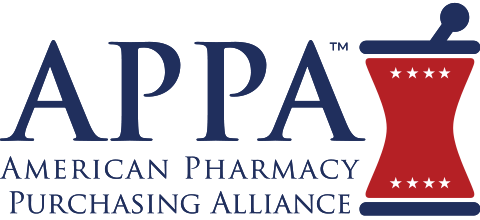How Pharmacy Benefit Managers Impact Drug Pricing, Hospital and Patient Care, Payers, and More
In the United States, the cost of diabetes-related drugs, such as insulin or Victoza, cost 10 times as much than if you were to buy them outside the US. Price inflation of prescription drugs are not new but it is a unique problem for the United States.
Who’s to blame for the skyrocketing costs of prescription drugs?
Pharmacy benefit managers (PBMs)
They may not be the only culprit, but they contribute largely to the problem. Competing drug companies buy access to PBM formularies so their products will be chosen as the recommended choice.
By paying rebates and other fees to a PBM, a drug manufacturer can take a bigger piece of the sales pie. To recoup the large rebates and other fees paid to the PBMs, drug manufacturers have to increase the list price of drugs.
The result is skyrocketing drug prices.
But the cost of prescription drugs is not the only thing that PBMs can impact in both negative and positive ways.
How Pharmacy Benefit Managers Work
Historically, PBMs act as middlemen entities that process prescription medication claims and plan sponsors for a small fee. They provide services and educational programs to aid patient. They also serve as an intermediary between insurers and other healthcare members. This allows them to negotiate large customer contracts and for pharmaceutical companies and pharmacies to get the best rate.
What PBMs do
- Negotiate rebates to get the most affordable option
- Operate mail order pharmacy to deliver medications directly to patients
- Ensure patient compliance in taking prescribed medications
- Manage formularies and process claims from patients and pharmacies
- Manage distribution among pharmacies, connect pharmacies to orphan drug supplier, and provide other specialty services.
The role was clear-cut and clean until they leveraged their position as middlemen to impact nearly every aspect of the prescription drug marketplace. Even an independent pharmacy is not spared from the impact that PBMs make.
Impact of PBMs on hospitals and patient care
PBMs are exploiting a Medicare provision that allows them to charge remuneration fees directly and indirectly to pharmacies within their network. To price out the competition, particularly a local independent pharmacy where patients have a personal relationship with pharmacists, they increase the fees for using in-house and member pharmacies as part of Medicare reimbursement.
With the way the incentives are structured, PBMs retain more of the discounts and fees, driving up costs on Medicare. Since the pricing model used is fiercely guarded, pharmacy benefit managers continue to hide the costs paid by health insurance companies, patients, and the government.
Impact of PBMs on American Health Care
PBMs generate revenue in three ways—administrative fees, pharmacy spread, and rebates.
- Administration fees are charged to plan sponsors and manufacturers. The additional fees and payments go straight to PBM
- Pharmacy spread is a PBM practice where the plan sponsor is charged a higher price than what is reimbursed to the network pharmacy. The difference, also known as a clawback, is pocketed by the PBM.
- Rebates are discounts on a mediation that drug manufacturers provide in exchange for PBMs covering a drug product from a paying manufacturer. Since the formularies that the plan sponsors cover are made by the PBMs, they can choose which drugs will be used even when there are less expensive drug alternatives.
All these resulted in high prescription drug prices, restricted patient access to pharmacies, and the negative impact of limited formularies.
Impact of PBMs on employers/payers
Payers can benefit from a PBM through management of prescription drug benefits for members. Because the contracts are often one-sided and complex, partnering with PBMs often results in limited savings.
Only 30% of employers understood the clauses of their PDM contracts, according to a study by the National Pharmaceutical Council.
Research from Cigna showed that employers sponsoring their own health plans can save annually with integrated medical and pharmacy benefits. They can also bolster member patient care and self-management.
Although tackling prescription spending without the help of a PBM is beneficial, employers/payers still need to weigh the pros and cons of partnering with PBMs.
Lack of Regulation and Transparency
Through all these scenarios, a commonality is the lack of federal regulation and transparency that allowed PBM practices to take advantage of their role in the healthcare marketplace and make money at the expense of patients, payers, and pharmacies.
Something needs to be done.
Lawmakers are pushing to fill in what’s lacking and make PBMs more accountable.
In California, legislations are being proposed to boost transparency in PBM dealings. One of these legislations require pharmacy benefit managers to provide information about how much they paid for a drug, including administrative fees, acquisition costs, and rebates received.

